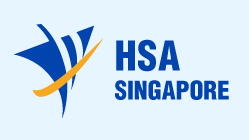The new article provides additional clarifications regarding the regulatory matters related to post-market obligations, and distribution records, and also summarizes the regulatory requirements associated thereto.

Table of Contents
The Health Sciences Authority (HSA), Singapore’s regulatory agency in the sphere of healthcare products, has published a guidance document dedicated to the Special Access Route (SAR) — a specific framework to be used to make unregistered medical devices available to healthcare professionals and patients under the accelerated procedure, should it be reasonably necessary to meet the respective clinical needs. The document describes in detail the applicable regulatory requirements and also provides recommendations to be followed by all the parties involved to ensure compliance thereto. At the same time, provisions of the guidance are non-binding, nor are intended to introduce new rules or impose new obligations. The authority also reserves the right to make changes to the guidance and provisions thereof, should it be reasonably necessary to reflect the corresponding changes to the underlying legislation.
Post-Market Obligations
The scope of the guidance covers, inter alia, the aspects related to post-market activities and reporting. In this respect, the authority mentions that the responsibility for reporting field safety corrective actions (FSCA) and adverse events (AEs) for medical devices that are supplied through the Special Access Route (SAR) lies primarily with the importer who arranged for its supply. It is further stated that compliance with the reporting obligations should be a condition for approval – the parties responsible for medical devices imported under SAR should duly notify the authority about any incidents and adverse events associated thereto, provided such events meet the reporting criteria. At the same time, healthcare professionals using such devices are also able to submit incident reports voluntarily. In this respect, the authority refers to the respective guidelines on adverse event reporting.

Declaration on Distribution Records
The document also describes the regulatory matters related to the distribution records the party responsible for a medical device imported under SAR should maintain to ensure traceability of the products. As explained by the HSA, the importer shall be required to submit a declaration on the distribution records via MEDICS within 30 days after the expiry of authorization, or within 30 days after the date of last export/supply, whichever is earlier. Apart from this, an importer shall duly maintain documentary evidence of supply (distribution records) to be provided to the HSA once requested. The authority additionally emphasizes that the guidance distribution stands for delivery of the medical device to the qualified practitioner, healthcare facility, or the consignee using it for non-clinical purposes, since medical devices imported under SAR should not be placed on the market and made available to the broad public, they are imported to meet specific needs.
SAR: Summary
The document also contains an appendix that provides a summary of all Special Access Routes and outlines their key features and specific aspects. According to the document, the routes currently available include the following ones:
- GN-26 – the one to be used by healthcare professionals requesting approval for importing an unregistered medical device needed for a specific patient. To be eligible for this route, the medical device in question should be approved by at least one recognized foreign regulating authority. As a pre-requisite, an importer should have a certified quality management system.
- GN 27 – the route to be used by laboratories and healthcare institutions applying for approval concerning medical devices needed for their patients. As in the previous case, the medical device in question should be approved by at least one of the recognized foreign regulating authorities, and a certified quality management system will be required for an importer as well.
- GN 28 applies when unregistered medical devices are imported for subsequent export or re-export. In such a case, there are no specific eligibility criteria or prerequisites to be applied.
- GN 29 can be used for importing unregistered medical devices to be used for non-clinical purposes. As in the previous case, no specific eligibility criteria or prerequisites are to be applied.
- GN 30 is the route to be applied when registered medical devices are imported by entities having no authorization from the registration holder. To be eligible for this route, the medical device in question should be registered in the Singapore Medical Device Register (SMRD), while the importer should hold a valid importer and wholesaler license with Good Distribution Practice for Medical Devices or ISO 13485. It is important to mention that this is the only route the scope of which is limited to a single consignment – the rest could be used for multiple consignments.
The permissions granted under all the routes listed hereinabove are valid for 12 months from the date of issue.
Terms and Definitions
To assist the parties involved with interpreting the applicable regulatory requirements, the guidance also provides the definitions of the most important terms and concepts used therein including, inter alia, the following ones:
- Product owner – the one who (a) supplies the health product under his name, or under any trademark, design, trade name, or other name or mark owned or controlled by him; and (b) is responsible for designing, manufacturing, assembling, processing, labeling, packaging, refurbishing or modifying the health product, or for assigning to it a purpose, whether those tasks are performed by him or on his behalf;
- A qualified practitioner stands for a person registered under the Medical Registration Act (Cap. 174) when acting in the course of providing medical treatment to a patient under his care, or a person registered under the Dentists Act (Cap. 76) whose name appears in the first division of the dentists register kept under that Act when acting in the course of providing dental treatment to a patient under his care.
In summary, the present HSA guidance provides an overview of the Special Access Routes and regulatory requirements associated thereto. The document highlights the key points to be considered concerning SAR applicability in specific cases.
Sources:
How Can RegDesk Help?
RegDesk is a next-generation web-based software for medical device and IVD companies. Our cutting-edge platform uses machine learning to provide regulatory intelligence, application preparation, submission, and approvals management globally. Our clients also have access to our network of over 4000 compliance experts worldwide to obtain verification on critical questions. Applications that normally take 6 months to prepare can now be prepared within 6 days using RegDesk Dash(TM). Global expansion has never been this simple.

